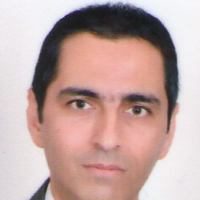Investigating the relationship between Tehiz and economic development after the Islamic Revolution in Iran
Author(s):
Article Type:
Research/Original Article (بدون رتبه معتبر)
Abstract:
As a study of the relationship between political parties and economic development after the Islamic revolution in Iran, this article pays attention to the course of economic and political developments in the form of development programs. The research is a qualitative and descriptive type of analysis, which is carried out by a documentary method. The results of the survey indicate that the Islamic revolution is the result of the participation of all political groups, including religious, religious and national groups, nationalists with socialist and liberal tendencies, and economic and political development requires the political participation of parties and groups and the economic participation of the private sector. After the revolution, these things have been seen in the country's development plans in the form of five-year plans, where the program and budget organization is the main agent of preparing the requirements and formulating the plan. Despite the fact that the Islamic Republic Party was the most comprehensive revolutionary and Islamic party, it was pulled towards isolation and closure due to differences caused by political attitudes and tendencies, without affecting the economic system and only by eliminating competitors. The parties of construction agents and the 18 groups of reforms had the most influence in Iran's economic development programs, and to the extent that the participation of the parties has decreased, the development programs have also been ineffective. So that the highest alignment and the best performance can be achieved in the third, first, second, fifth and fourth programs respectively.
Keywords:
Language:
Persian
Published:
Journal of Political Studies, Volume:15 Issue: 59, 2023
Pages:
71 to 87
https://magiran.com/p2650749
مقالات دیگری از این نویسنده (گان)
-
Investigating Factors Affecting Theft based on Social Health Damage (Case Study of Golestan Province)
Mohammad Hasn Rezaei, Mohamadreza Naeimi*, Isa Hasnzadeh
Razi Journal of Medical Sciences, -
A comparative study of the relationship between political parties and economic development
Soosan Khaleghi Karsalari, Isa Hasanzadeh *, MohammadReza Naeim, Abbas Ali Talebi
Journal of Sociological Researches,


